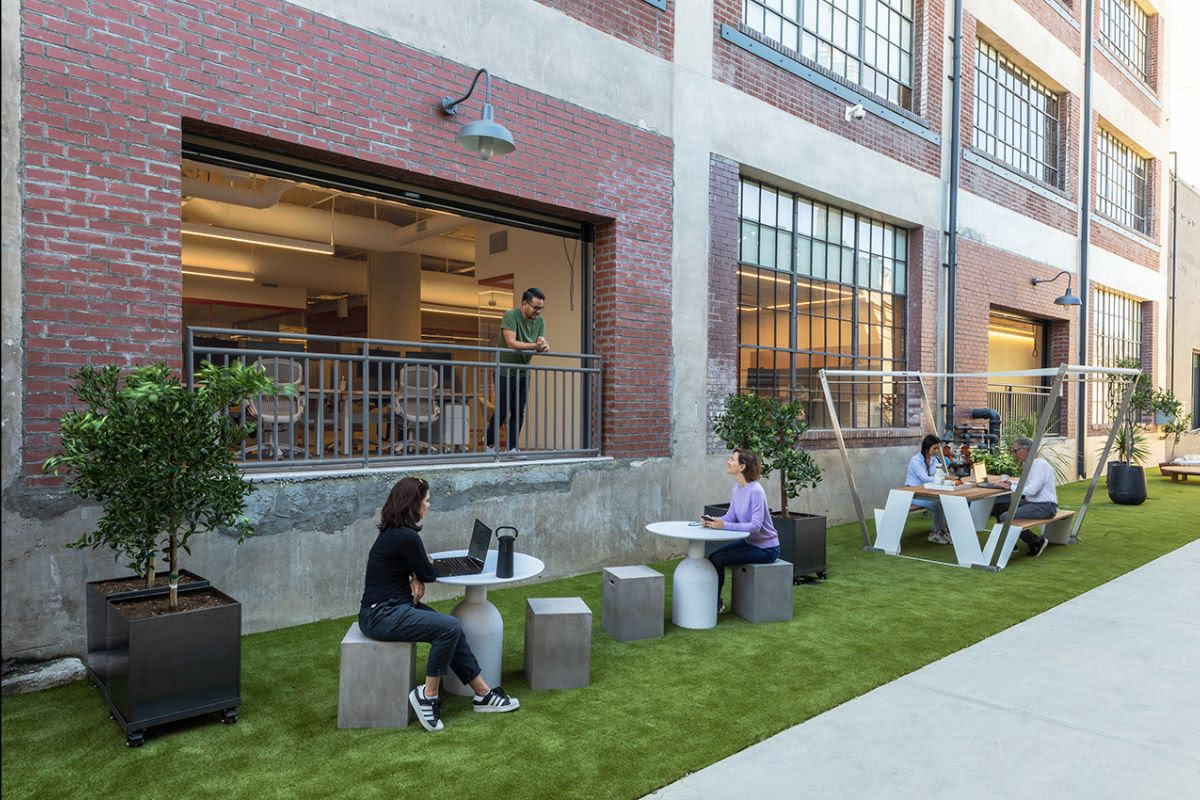The new Los Angeles headquarters for fast-growing Califia Farms, a brand of dairy alternative products, was designed with the post-Covid hybrid work environment in mind. Located in Maxwell Coffee House, a historic production facility built in 1924 that has become a vibrant mixed-use complex, the office features a café bordered by generous meeting rooms.
The café includes a bar and tasting room, with a sizable screen that displays the company’s digital media work. The two-level café, staffed by a barista, is a central hub for meeting, socializing, and indulging in Califia’s own plant-based milks, creamers, and frozen desserts.
“As soon as you step inside the office, you’re transported to the inviting ambiance of a bustling café,” says Alexis Dennis-Huether, the project's lead designer and Associate Principal with SLAM. “Rather than being greeted by a traditional receptionist, there’s a friendly barista, setting the tone for a unique and memorable experience. This entrance creates an impactful first impression that perfectly captures the brand's bold and playful personality.”
The challenge of accommodating a large team of 200 staff members within a 30,000 sf space inspired design firm SLAM to get creative with multi-purpose, open concept areas, according to a news release. This approach allowed for a stronger emphasis on functionality and flexibility.
Hybrid office design includes tasting room, indoor-outdoor connection
Hybrid office models can lead to worker isolation, but SLAM designed the space to counteract this risk. Large amenity spaces offer flexibility for chance encounters, collaboration, and meetings.
Equipped with kitchen appliances including a black electric cooktop and stainless-steel refrigerator, and the technology of a meeting room, the tasting room serves as a research and development space, where staff create, test, and refine products. It also becomes a relaxed setting for team activities, break-out meetings, and lunch preparation.
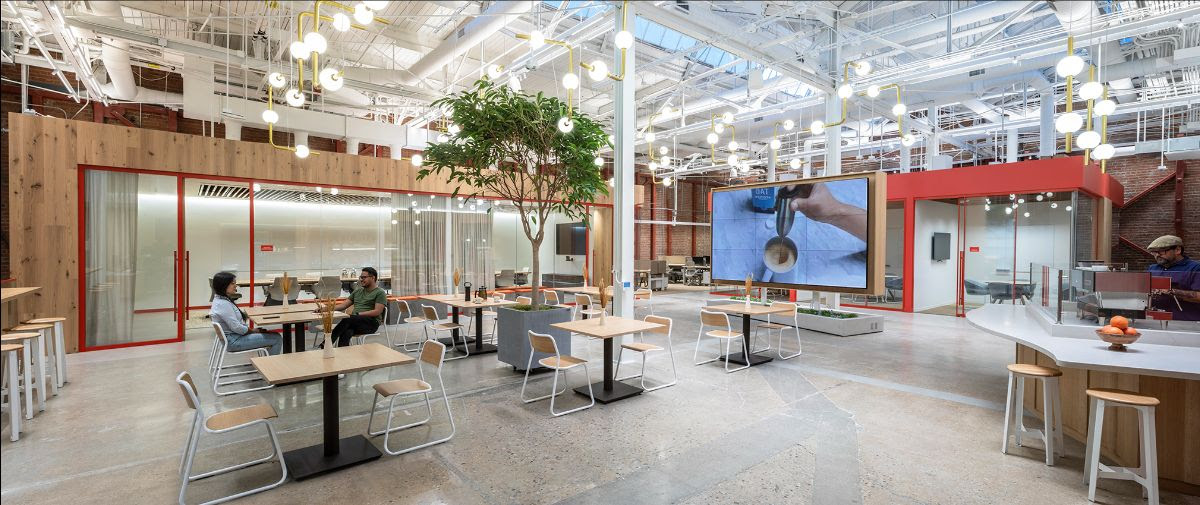
Throughout the office, 15% of workstations are dedicated to hoteling, all bathed with an abundance of natural light through large windows and skylights. Meeting rooms are equipped with high-quality video-conferencing solutions, allowing for seamless hybrid meetings and teamwork.
One design goal was to create an environment that interfaces with the public space outside. Creating vital indoor-outdoor connections, branding elements and office operations are visible from the street while roll-up garage doors open out to a patio to extend the office atmosphere into the downtown streetscape. Because of its strong street presence, Califia has become a friendly neighborhood fixture, fostering an important sense of community in this evolving area.
The office is adorned with abstract interpretations of the company’s brand speaking to a distinct identity and spirited culture. Califia Farms’ signature amphora-shaped bottle, with its distinctive curves, presides over the café lounge as a tinplated metal silhouette, adding a striking and eye-catching element. The continuous and smooth lines of the bottle are captured in the curvatures of the café bar while a more abstract interpretation of their product design is stamped into the carpet pattern.
Bold brand colors of red and blue are balanced against natural materials. Vermilion red encased banquette niches are recessed into wood-panelled walls, allowing for privacy and comfort. Framed in double pane glass, meeting rooms provide a sense of transparency, and feature small touches that mirror the Califia Farms’ brand, including an outline in a thick red trim that accentuates sharp angles and warm-toned finishes.
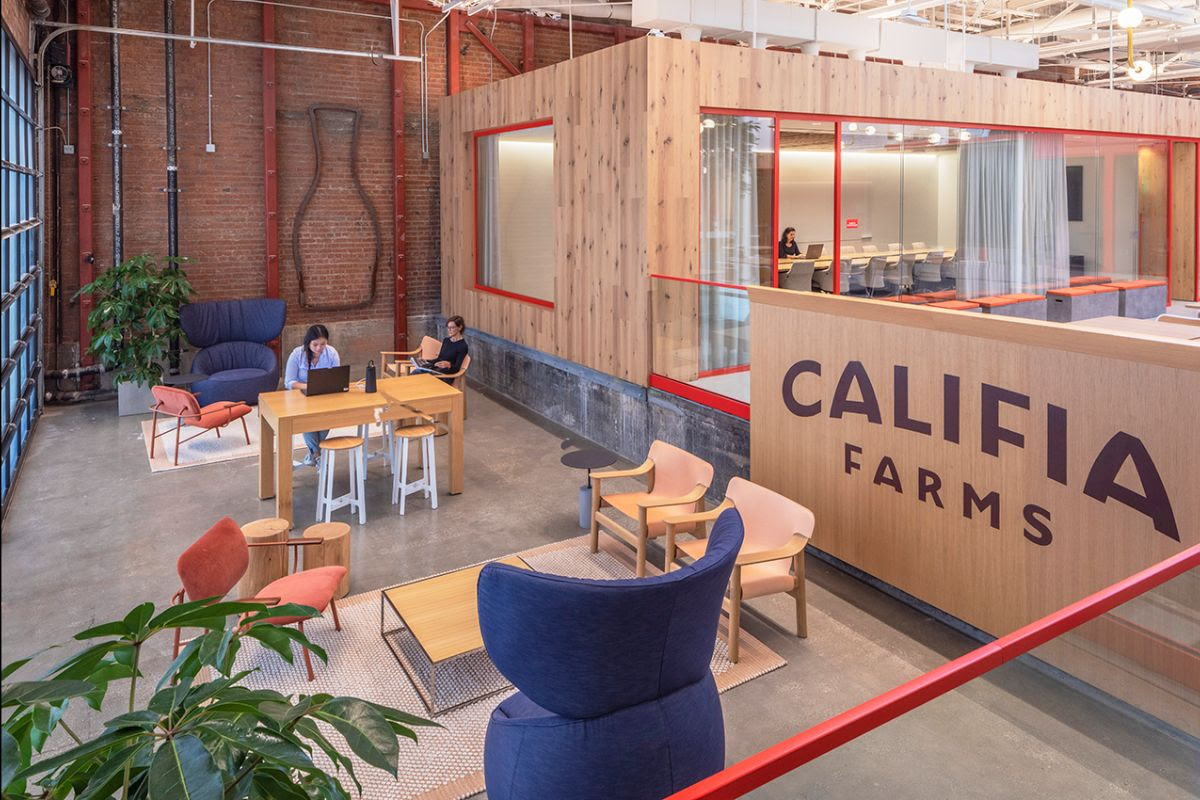
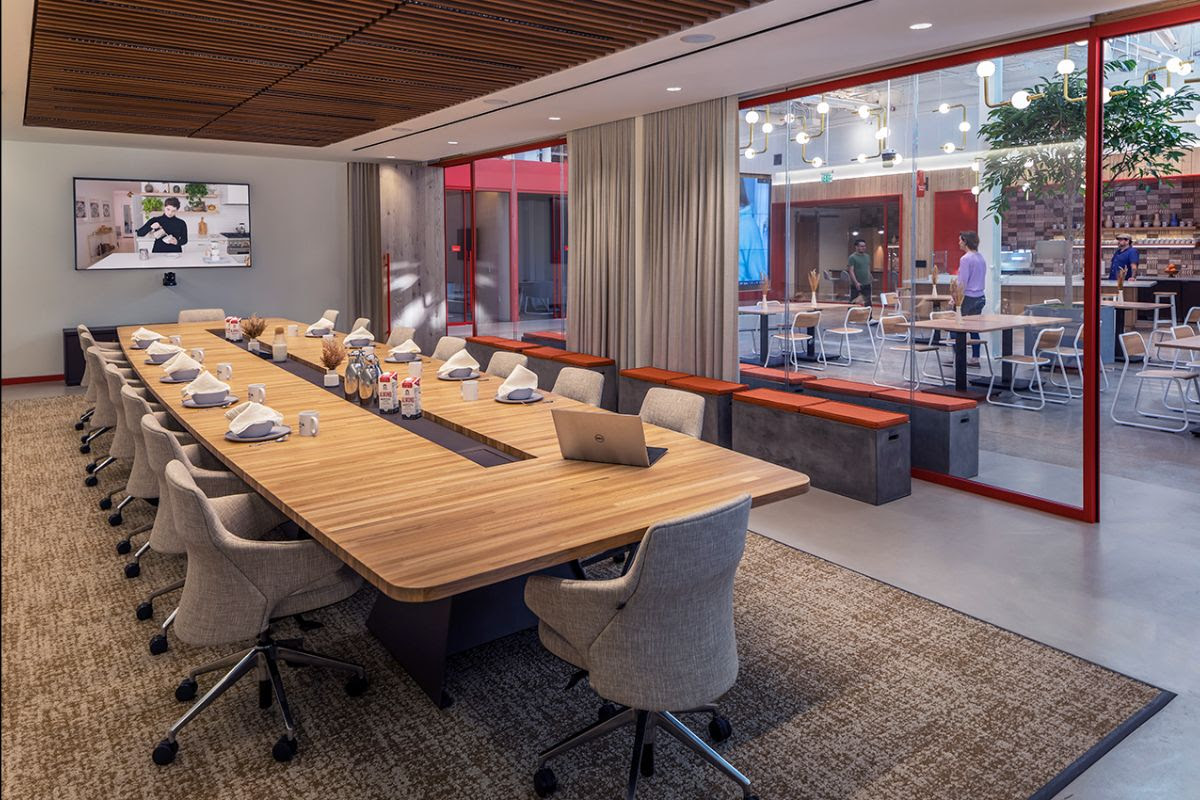
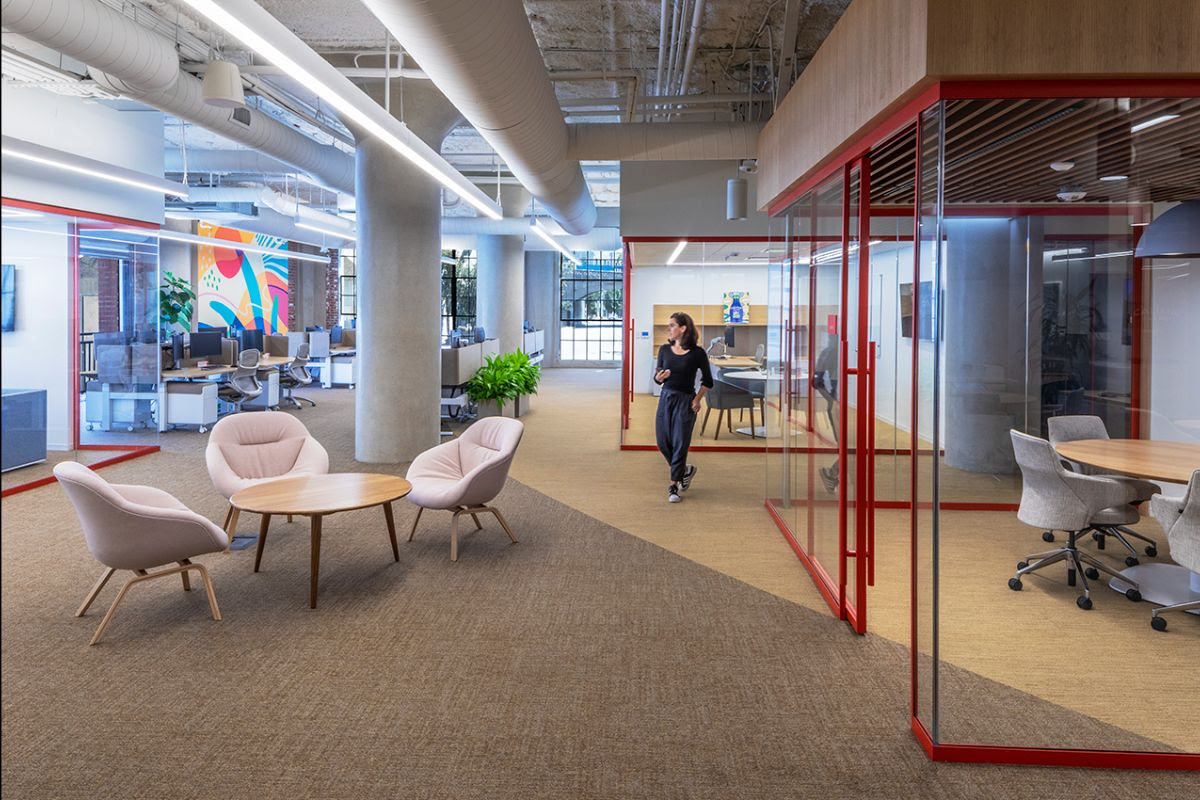
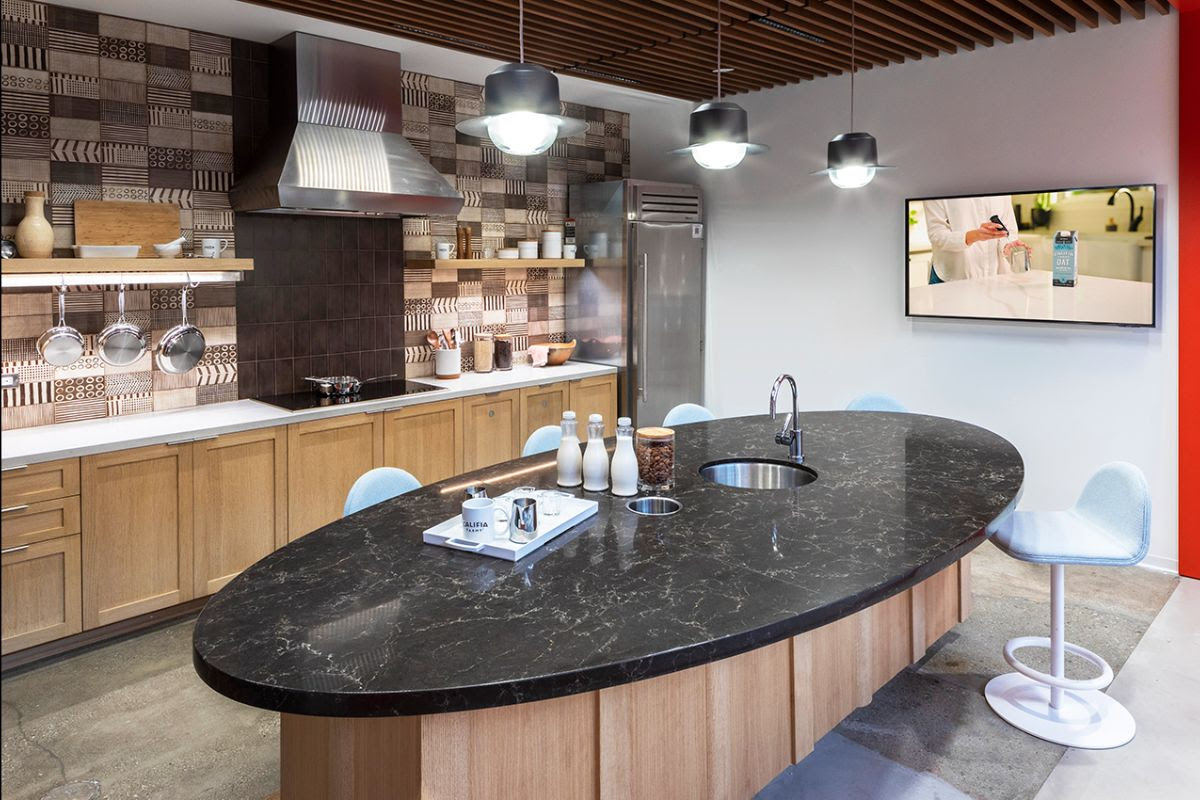
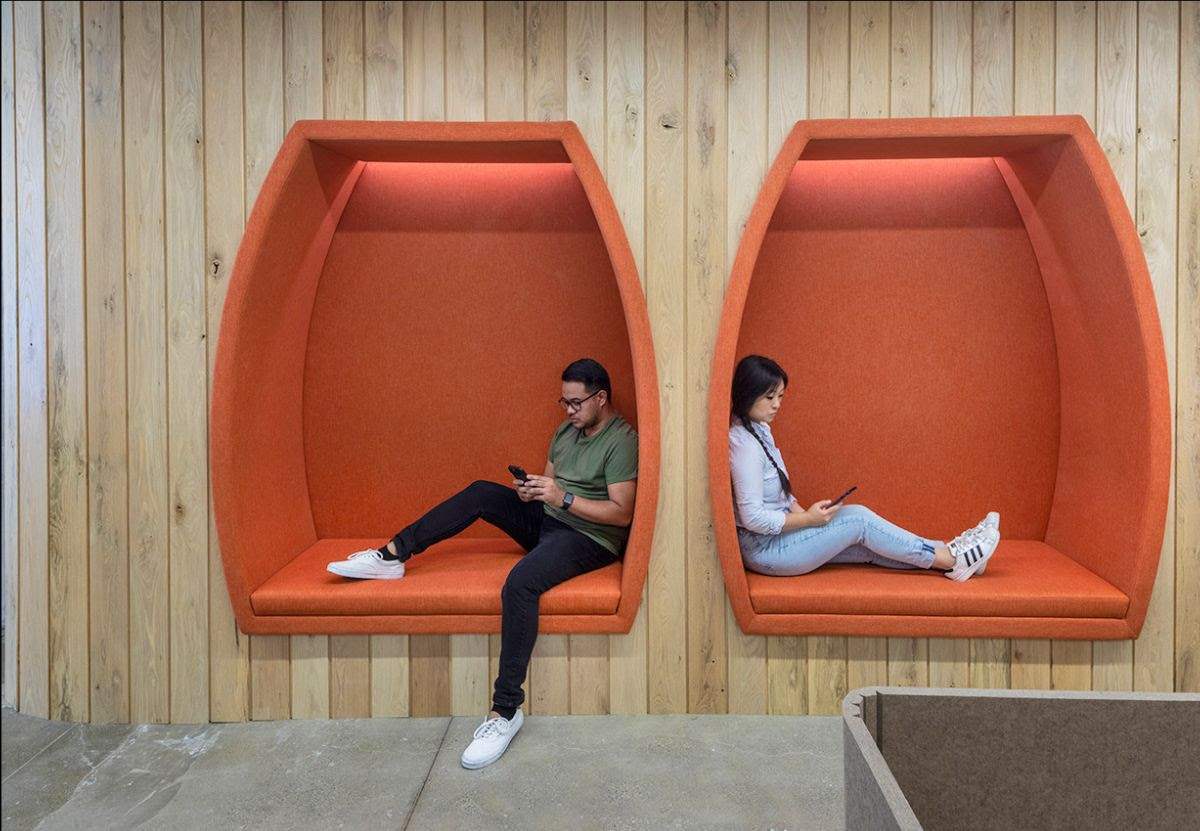
Related Stories
| Aug 11, 2010
AIA Course: Enclosure strategies for better buildings
Sustainability and energy efficiency depend not only on the overall design but also on the building's enclosure system. Whether it's via better air-infiltration control, thermal insulation, and moisture control, or more advanced strategies such as active façades with automated shading and venting or novel enclosure types such as double walls, Building Teams are delivering more efficient, better performing, and healthier building enclosures.
| Aug 11, 2010
Glass Wall Systems Open Up Closed Spaces
Sectioning off large open spaces without making everything feel closed off was the challenge faced by two very different projects—one an upscale food market in Napa Valley, the other a corporate office in Southern California. Movable glass wall systems proved to be the solution in both projects.
| Aug 11, 2010
Silver Award: Pere Marquette Depot Bay City, Mich.
For 38 years, the Pere Marquette Depot sat boarded up, broken down, and fire damaged. The Prairie-style building, with its distinctive orange iron-brick walls, was once the elegant Bay City, Mich., train station. The facility, which opened in 1904, served the Flint and Pere Marquette Railroad Company when the area was the epicenter of lumber processing for the shipbuilding and kit homebuilding ...
| Aug 11, 2010
Special Recognition: Durrant Group Headquarters, Dubuque, Iowa
Architecture firm Durrant Group used the redesign of its $3.7 million headquarters building as a way to showcase the firm's creativity, design talent, and technical expertise as well as to create a laboratory for experimentation and education. The Dubuque, Iowa, firm's stated desire was to set a high sustainability standard for both itself and its clients by recycling a 22,890-sf downtown buil...
| Aug 11, 2010
Thrown For a Loop in China
While the Bird's Nest and Water Cube captured all the TV coverage during the Beijing Olympics in August, the Rem Koolhaas-designed CCTV Headquarters in Beijing—known as the “Drunken Towers” or “Big Shorts,” for its unusual shape—is certain to steal the show when it opens next year.
| Aug 11, 2010
Top of the rock—Observation deck at Rockefeller Center
Opened in 1933, the observation deck at Rockefeller Center was designed to evoke the elegant promenades found on the period's luxury transatlantic liners—only with views of the city's skyline instead of the ocean. In 1986 this cultural landmark was closed to the public and sat unused for almost two decades.
| Aug 11, 2010
200 Fillmore
Built in 1963, the 32,000-sf 200 Fillmore building in Denver housed office and retail in a drab, outdated, and energy-splurging shell—a “style” made doubly disastrous by 200 Fillmore's function as the backdrop for a popular public plaza and outdoor café called “The Beach.
| Aug 11, 2010
Integrated Project Delivery builds a brave, new BIM world
Three-dimensional information, such as that provided by building information modeling, allows all members of the Building Team to visualize the many components of a project and how they work together. BIM and other 3D tools convey the idea and intent of the designer to the entire Building Team and lay the groundwork for integrated project delivery.
| Aug 11, 2010
Inspiring Offices: Office Design That Drives Creativity
Office design has always been linked to productivity—how many workers can be reasonably squeezed into a given space—but why isn’t it more frequently linked to creativity? “In general, I don’t think enough people link the design of space to business outcome,” says Janice Linster, partner with the Minneapolis design firm Studio Hive.
| Aug 11, 2010
Great Solutions: Products
14. Mod Pod A Nod to Flex Biz Designed by the British firm Tate + Hindle, the OfficePOD is a flexible office space that can be installed, well, just about anywhere, indoors or out. The self-contained modular units measure about seven feet square and are designed to serve as dedicated space for employees who work from home or other remote locations.


